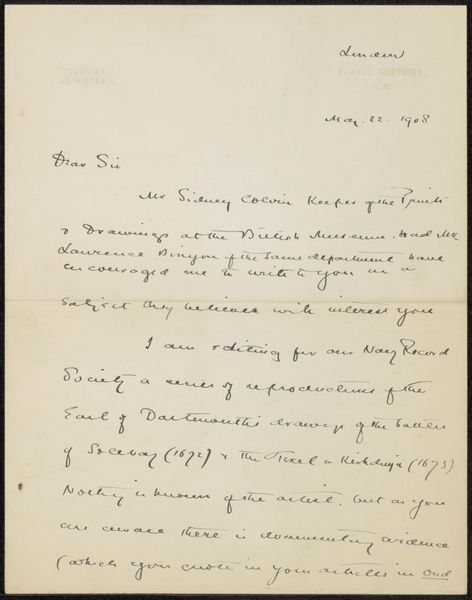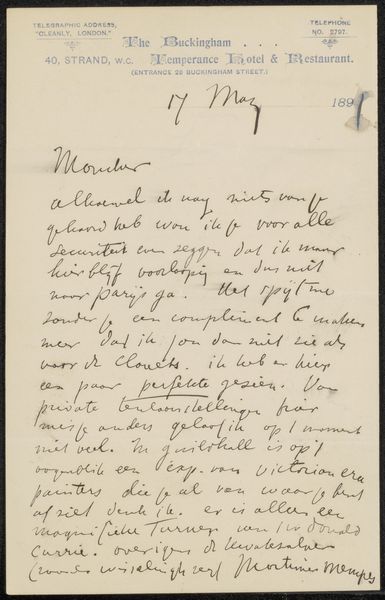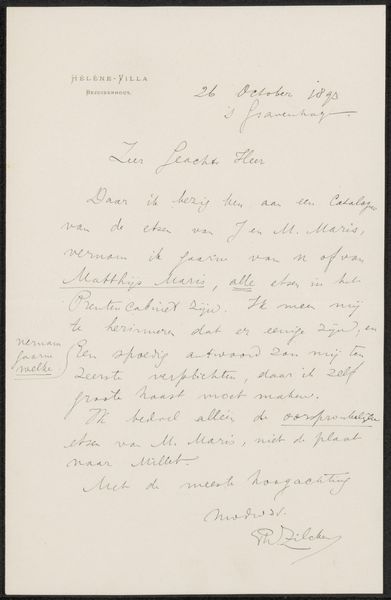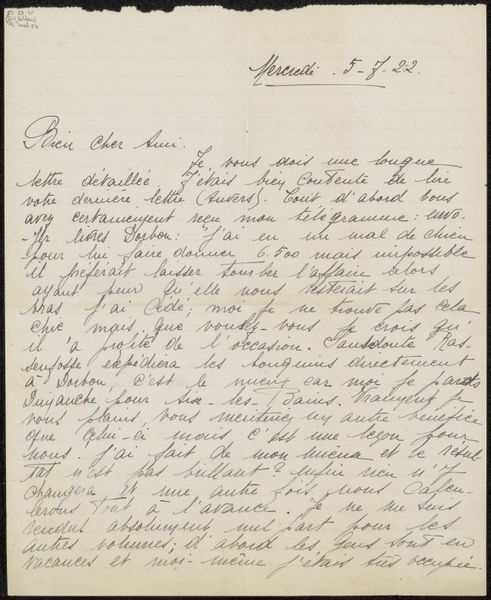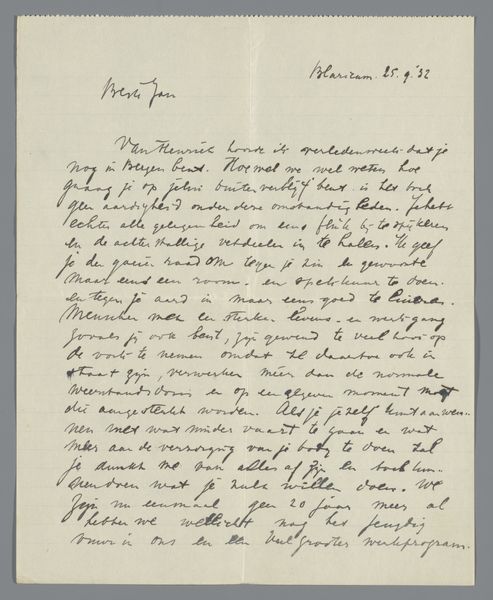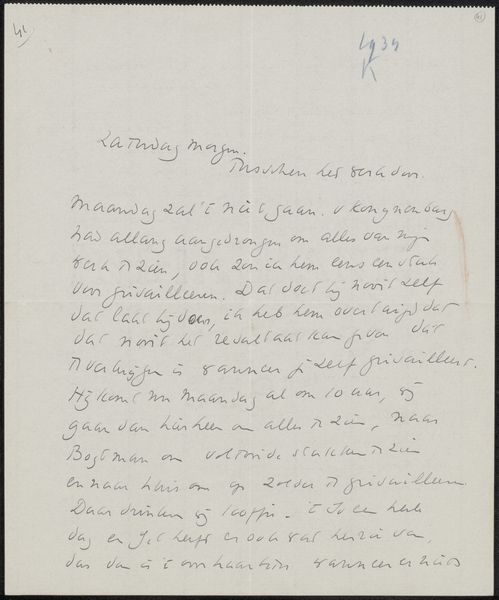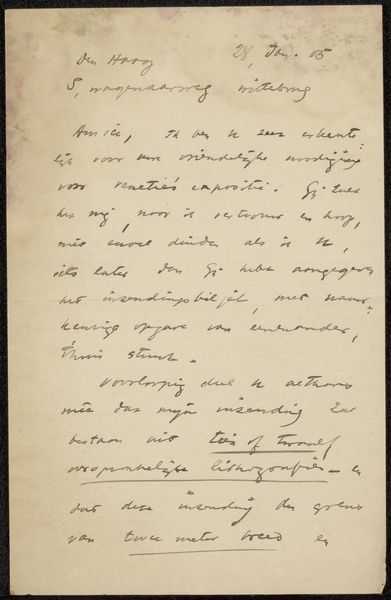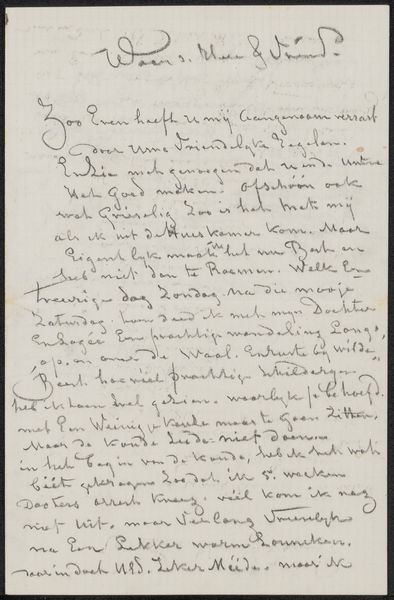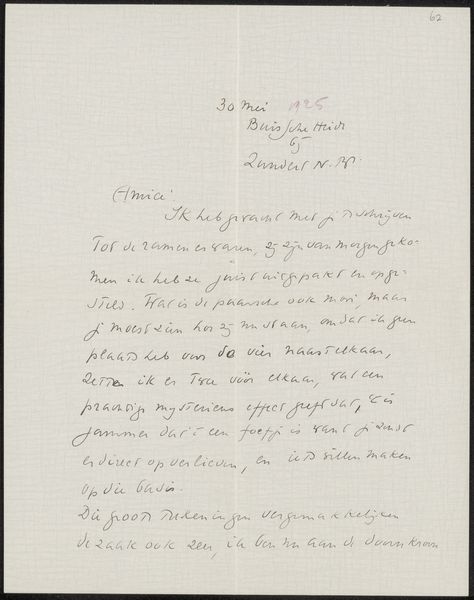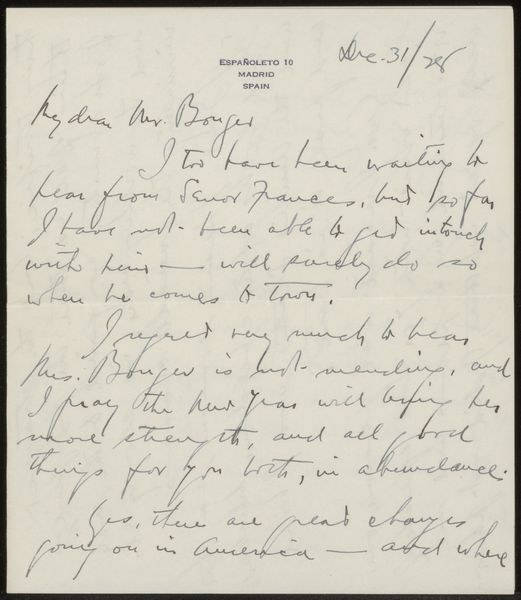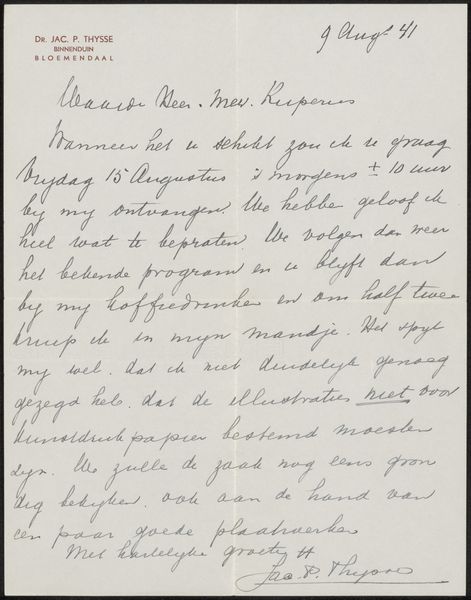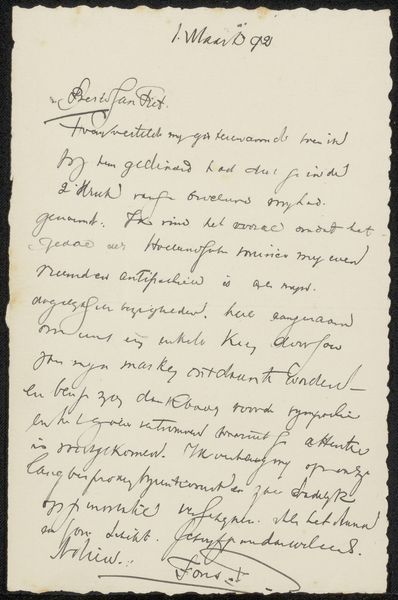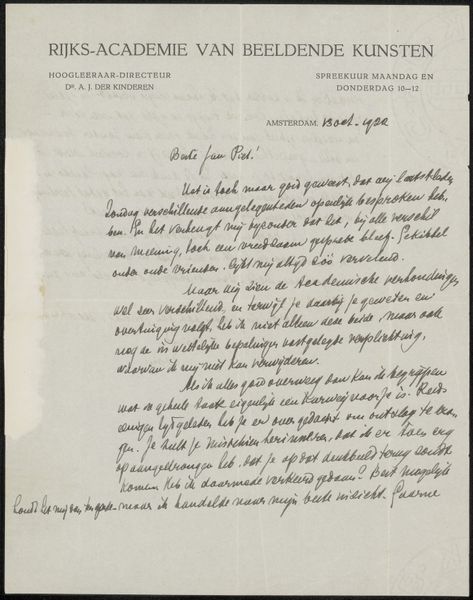
drawing, paper, ink, pen
#
portrait
#
drawing
#
ink drawing
#
pen drawing
#
impressionism
#
paper
#
ink
#
pen
Copyright: Rijks Museum: Open Domain
Editor: Here we have "Brief aan Jan Veth," a drawing by Willem Witsen from 1889, using pen and ink on paper. It’s a letter, and seeing the handwritten script gives it a very personal, intimate feeling, like a glimpse into a private conversation. What do you make of it? Curator: From a materialist perspective, it's fascinating to consider the labour involved in creating this letter. The physical act of writing, the quality of the paper and ink, the writer’s hand—these elements become central. Look at the address, "The Monico, Piccadilly Circus." This situates the letter writer in a specific social and economic context—a relatively affluent, urban environment. What does the use of this paper suggest about Witsen’s social circle and access to materials? Editor: That's a great point. I was just focused on the emotional aspect of the letter, but I didn't think about the economic implications. Curator: Precisely! The materiality prompts questions about production and consumption. Where did Witsen get his ink and paper? Was it mass-produced, or handcrafted? And how did those factors impact his artistic practice and message? Consider also the marks on the paper – what stories might they tell? Editor: So, by looking at the physical aspects of the letter, we can learn more about the artist’s life, his social environment and even the potential industry surrounding art materials. Curator: Absolutely. It's a way of understanding art not just as a product of individual genius, but as something shaped by material conditions and social relationships. Editor: I've definitely got a new appreciation for letters. It’s incredible how a simple note contains so much information when you consider its materiality! Curator: Indeed! And remember to always examine how those materials might reflect larger systems of power.
Comments
No comments
Be the first to comment and join the conversation on the ultimate creative platform.
